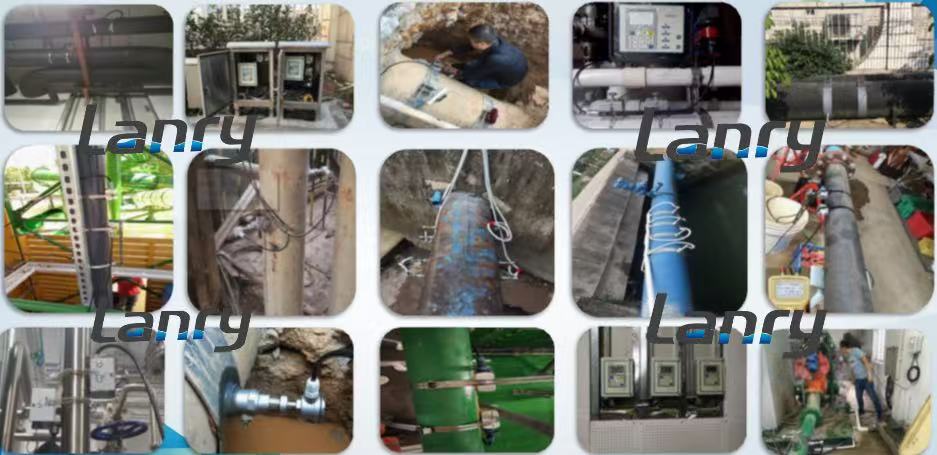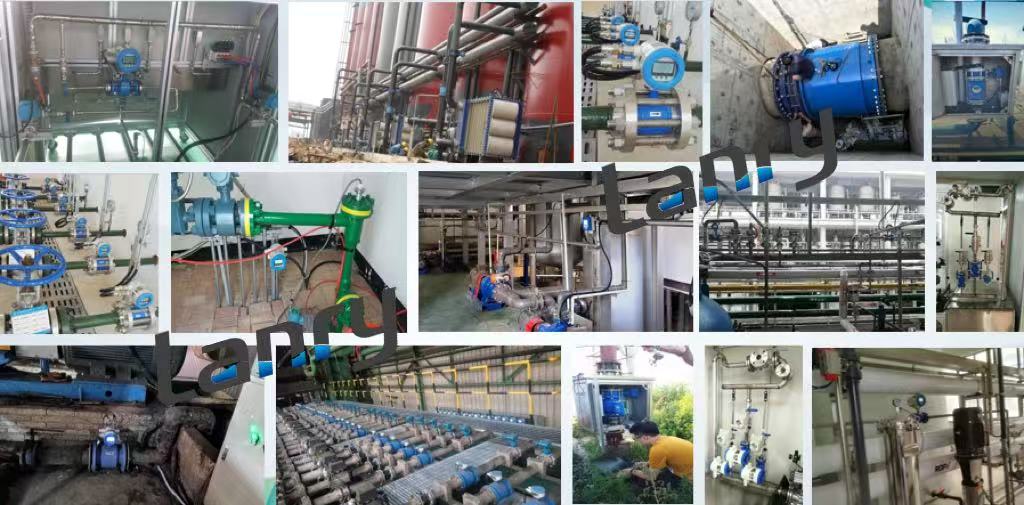In the realm of fluid measurement, electromagnetic flowmeters and ultrasonic flowmeters stand out as two widely used devices. Each has distinct features, and understanding their differences is crucial for making the right choice in various industrial applications.
1. Working Principles
Electromagnetic Flowmeters
Electromagnetic flowmeters operate based on Faraday’s law of electromagnetic induction. When a conductive fluid flows through a magnetic field generated by the meter, a voltage is induced across the fluid. This induced voltage is proportional to the velocity of the fluid. Mathematically, the induced voltage E is given by E=BDV, where B is the magnetic field strength, D is the diameter of the measuring tube, and V is the average velocity of the fluid. This principle enables highly accurate measurement of conductive fluids.
Ultrasonic Flowmeters
Ultrasonic flowmeters use sound waves to measure fluid velocity. There are two main types: transit - time and Doppler. Transit - time ultrasonic flowmeters measure the difference in time it takes for ultrasonic signals to travel upstream and downstream in the fluid. The flow velocity is calculated from this time difference. Doppler ultrasonic flowmeters, on the other hand, rely on the Doppler effect. When ultrasonic waves are reflected off particles or bubbles in the fluid, the frequency of the reflected waves changes. The flow velocity is determined from this frequency shift.
2. Measurement Accuracy
Electromagnetic Flowmeters
Electromagnetic flowmeters offer high accuracy, typically within ±0.2% to ±1% of the measured value. They provide consistent performance over a wide range of flow rates, making them suitable for applications where precise measurement is essential, such as in the pharmaceutical and chemical industries.
Ultrasonic Flowmeters
The accuracy of ultrasonic flowmeters varies depending on the type. Transit - time ultrasonic flowmeters can achieve an accuracy of ±0.5% to ±2%, while Doppler ultrasonic flowmeters generally have lower accuracy, around ±2% to ±5%. Factors such as the distribution of particles or bubbles in the fluid can significantly affect the accuracy of Doppler flowmeters.
3. Applicable Fluids
Electromagnetic Flowmeters
These flowmeters are suitable for conductive fluids only. The fluid must have a minimum electrical conductivity, usually greater than 5 μS/cm. They are commonly used to measure the flow of water, wastewater, and various chemical solutions.
Ultrasonic Flowmeters
Ultrasonic flowmeters can be used for both clean and dirty fluids. Transit - time flowmeters work well with clean or slightly contaminated fluids, while Doppler flowmeters are more suitable for fluids with a significant amount of suspended particles or bubbles, such as slurries and sewage.
4. Installation Requirements
Electromagnetic Flowmeters
Electromagnetic flowmeters require a straight pipe section upstream and downstream to ensure uniform flow. Generally, an upstream straight - pipe length of 5 to 10 pipe diameters and a downstream length of 2 to 5 pipe diameters are recommended. They also need to be installed in a location where the fluid is fully filled in the pipe.
Ultrasonic Flowmeters
The installation of ultrasonic flowmeters is more flexible. Clamp - on ultrasonic flowmeters can be installed externally without cutting the pipe, reducing installation time and costs. However, accurate installation still requires proper alignment and consideration of factors such as pipe wall thickness and material.
5. Cost
Electromagnetic Flowmeters
Electromagnetic flowmeters tend to be more expensive upfront due to their sophisticated design and construction. However, their long - term reliability and accuracy can result in lower overall costs in applications where precise measurement is critical.
Ultrasonic Flowmeters
Ultrasonic flowmeters, especially clamp - on models, are often more cost - effective in terms of initial investment. They are a good choice for applications where accuracy requirements are not extremely high or where installation simplicity is a priority.
In conclusion, electromagnetic flowmeters and ultrasonic flowmeters each have their own advantages and limitations. By carefully considering factors such as working principles, measurement accuracy, applicable fluids, installation requirements, and cost, engineers and operators can select the most suitable flowmeter for their specific applications.


Post time: Apr-08-2025

